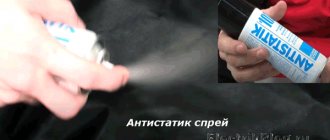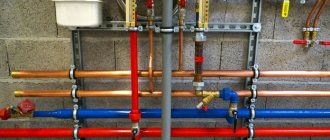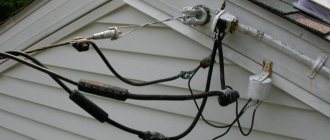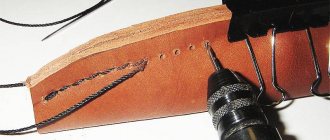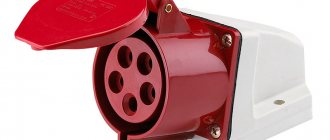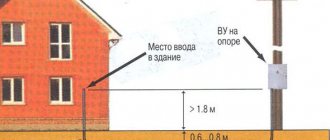The occurrence of static electricity is a natural physical process associated with the accumulation of electrical charge on surfaces. As a result of this process, the ionic balance is disrupted, which is why equipment for removing static charge is important in many industries and laboratory research. In some industries, such as chip manufacturing, static charge can cause significant damage.
A static charge occurs when one object comes into contact with another only when the air humidity is less than 80%. The formation of a static charge is facilitated by a sharp temperature change, exposure to an electromagnetic field, ultraviolet and x-ray radiation. Charge also occurs during friction and during the processing of various materials. The accumulation of static charge is greatly influenced by the material of the product itself.
In general analytical and microbiological laboratories, plastic containers, which can carry a charge, are often used for weighing and preparing samples. This can lead to errors, especially when weighing small masses of samples with high accuracy, 4th or more decimal places. To remove static charge, special antistatic devices are used: bowls and ionizers. They allow you to remove static charge from various surfaces, materials, laboratory glassware and other objects.
Static Relief Devices
Our range includes the following devices:
- Devices that eliminate static voltage from film materials (high-voltage transformer with a special rail).
- Equipment for removing high electrostatic voltage that occurs in electroplating shops, electronic and medical equipment assembly departments, etc. (air ionizer guns).
- Fans that provide ionized air to industrial premises are devices that are optimally suited for removing static voltage in broadly focused areas. They are used in thermoplastic machines, in packaging printing devices, in assembly shops for medical and electronic equipment.
- Devices for measuring static voltage readings.
You can buy all the equipment we offer for antistatic production in production with delivery both in Moscow and in the regions of Russia. You can always get detailed information on prices, as well as advice on the use of static voltage removal devices from our consultants by calling the phone number listed on the website.
offers a wide range of devices for neutralizing static electricity produced by ELTEX (Germany).
During the production process associated with the processing of roll materials such as paper, foil, or film, a voltage of the order of tens, sometimes hundreds of kilovolts arises. Static electricity can completely stop a production process or cause irreparable damage to equipment. In addition, static electricity can cause serious fires.
Removing static electricity is a top priority in any industry involving the production and processing of roll materials.
What do we offer?
The Gluvex company offers modern models of antistatic equipment with an official manufacturer’s warranty. We select only proven models that have proven convenience, reliability and efficiency in various areas.
We employ professional consultants who understand the technical characteristics of the equipment. If you need help choosing a static discharge device, we can help you find the right model for your facility.
You can pick up the equipment from our warehouse yourself or order delivery to anywhere in Russia. Before shipping, we will check the contents and availability of accompanying documents, and securely pack the goods.
How to remove static?
A static neutralizer, skillfully installed at the right points on the production line, .
is a supplier of antistatic equipment and accessories that neutralize static electricity from polymer materials, paper, fabric, foil and protect production workers from the harmful effects of electrostatics.
Our catalog includes a wide range of passive and active static electricity neutralizers from leading European manufacturers:
- antistatic strips
- electrodes
- ionizers
- Power supplies
- transformers
Antistatic agents from Eltex allow you to completely get rid of problems with static electricity . Modern static electricity neutralizers make it possible to ensure complete safety at work and prevent emergencies.
How to order?
You can order antistatic equipment online at any convenient time. Our managers will promptly process your application, contact you to clarify details and ensure prompt delivery.
You can also place an order by calling +7 (499) 270-16-62. You can clarify all the nuances with a consultant, and also discuss the possibility and timing of delivery of the model you need to order.
Compatibility with devices:
- H-Cube®
- H-Cube Mini Plus™
- H-Cube Pro™
- CatCart Changer™
- Phoenix Flow Reactor™
Return to list of articles
What is electrostatics?
There are two types of electricity - current, which flows through conductors and is used as a power source for the machines and mechanisms that support the modern world, and static, which is usually found on non-conducting materials and which does not flow as current.
Electrostatics is the study of static electricity. For many reasons, electrostatics was a neglected field of science, since statics was not as useful as "regular" electricity. This is changing because in the industrial world, statics are a problem in many industries. But it can also be productively used in modern industrial methods and processes.
Antistatic wrist strap for working with electronics
When working with or repairing complex electronics, a person must be concerned not only about their own safety, but also about the sensitive components of the device. Its performance may be affected by static electricity.
The article will cover the topic of what an antistatic bracelet is, give a description of its varieties, and describe the principle of operation. At the end, instructions will be given on how to make an antistatic bracelet with your own hands.
Causes of static electricity in production
Five main causes of static:
- The joining or separation of two materials, usually between a roll and a film or by rubbing the materials against each other.
- Rapid heating, usually in ovens for curing or drying.
- Cutting processes - sheet cutters, trimming or cutting with cylindrical knives (slitters).
- Irradiation with certain waves of the ultraviolet spectrum.
- Induced induction is when one charged object creates a charge on another object.
Usage
Having learned what an antistatic wrist strap is for, you need to understand how to use it correctly. If used incorrectly, the effectiveness of such a device can be significantly reduced. You need to use the bracelet as follows:
- Place the cuff on your wrist and pull it tightly to it. The strap is placed on the metal plate towards the wrist.
- Connect the cord to the connector on the cuff.
- Connect the crocodile at the other end to the grounded body of the electrical device or to the active grounding bus.
How to get rid of static electricity?
If the object is conductive, simply ground it and any static charge generated on it will flow harmlessly to the ground. If the object is non-conductive such as plastic, paper, cloth, glass, wood etc then this becomes more difficult as the charge will not flow down the ground but will remain in place. That's why it's called static.
Increasing the ambient humidity will reduce the generation of static on materials that absorb moisture (cotton, textiles, paper), but this is not very effective on other materials that do not absorb moisture.
How to choose a static removal device?
There are many factors to consider when choosing a static eliminator.
Distance to material: Some devices are designed for short range, others for long range. As a general rule, we recommend choosing a short-range ionizer if your technology allows it. Short-range ionizers are cheaper and solve problems effectively.
Modern Developments: There has been a revolution in the performance of static removal equipment. It began around 2004 with the launch of the Ionstorm long-range ionizer system by Fraser. Since then, progress has been very rapid. Modern DC static removal devices are many times better than older equipment with separate high voltage transformers. Older equipment may still be suitable for many applications, but it is unwise to select a device based solely on cost. Modern DC ionizers are typically 10% more expensive, but they provide up to 100% more power and have many other benefits.
Static removal solutions from Nex Flow
Why use pneumatic equipment with static electricity control?
Static control requires static removal devices (ionizers) to remove static charges from a charged surface. There are different types of static removal systems, but the most commonly used in industry, like Nex Flow air blowers, are AC ionizers. The principle of operation is as follows: with each cycle of alternating current, the surrounding air of the ionizer is ionized - first with a negative charge, and then with a positive one. This creates a cloud of positive and negative ions. If the surface charge is negative, positive ions eliminate negative static, and if the charge is positive, then it is neutralized by negative ions. Other ions are pushed back into the atmosphere.
Ionizers are often used in industry, but most Nex Flow devices are a combination of either an air knife, air booster, and/or remote static elimination. Nex Flow uses only high quality static rods and power supplies with sufficient voltage and long life. Here's what a good static electricity removal system requires:
- Heavy Duty Static Rods and “Pins” – When selecting an ionizer, the static rod must be strong enough for factory use. There is a whole technology for designing and manufacturing static “pins” that produce ions. If the pin is easily bent or damaged, the life of the ionizer will be short (which equates to new costs).
- 7kV Power Supply or Higher – All ionizers require a high voltage power supply to operate. It has been repeatedly proven by research that a power supply of 7 kV or higher is much better than low voltage supplies (typically 5 kV), simply because it lasts longer. The connection between the power supply and the ionizer is made with a high-voltage cable, in which current losses occur.
- The maintainability of the power supply is a very important characteristic, because many power supplies are not repairable. Those used by Nex Flow are easy to repair.
- Safety - the ionizers used by Nex Flow are equipped with a special connector through which the power is connected, which prevents contact with a person (and the possibility of electric shock) in the event of sudden removal of the ionizer while the power supply is turned on.
As stated earlier, Nex Flow primarily focuses on static cleaning and static removal devices from a distance. This is achieved by combining an ionizer (rod or point) with an air flow amplification device. Nex Flow accomplishes this task using air knives, in the form of the Air Blade ionizer, which is the most common, and eliminates all types of charges from relatively flat surfaces such as car bodies (charged dust), plastic doors, bumpers, computer cases, etc. d. The Ion Blaster Beam system uses a point ionizer mounted on the end of an air blast accelerator to create a cone of ionized air.
These devices operate on the principle of taking an “ion cloud” from an ionizer and moving it over a distance, neutralizing surfaces and cleaning them. After removing the static charge, dust and debris are easily blown away under minimal pressure.
However, there is a myth about the distance at which a static removal device can work. The air blade and jet accelerator produce a laminar flow of accelerated air. This laminar flow carries ionized air produced by the antistatic device. Because the flow is laminar, the ions are not recovered as quickly as they would be in a vent flow. But what will the distance be? Some companies claim 6 m, but this is somewhat dubious. Even in laminar flow, the "ions" will still recombine. The rule is this: the more concentrated and dense the ion cloud, the faster the neutralization of the charged surface will occur, and the further it is from the ionizer, even if it is carried by a laminar flow, the weaker it is. Thus, already at 0.7 m a weaker concentration of ions will be obtained to remove the static charge and it will take more time to remove the charge. If the charged surface is 6 m20 feet away, you will still be able to neutralize the surface, but it may take a few minutes instead of a few milliseconds.
The fact is that even without an air jet, an ionizer located 6 m from a charged surface can neutralize that surface, but it will take about an hour. From a practical point of view, in most cases there is not that much time in production because the workpiece is moving. On slow production, the practical limit is about 0.7 m from the ionizer. If the target is moving quickly, the delay time may be enough to reduce the static charge. In such cases, a powerful static rod is used. The time it takes to remove static charge is not very dependent on laminar flow - it depends on the power of the ionizer itself.
Need some advice? Our specialists will answer all questions.
Call or send a message to
Use of static electricity
Static electricity in industry is generally considered a problem to be avoided. But it can be productively used in many modern processes, such as:
- Manipulation of cells in biological technologies, for example, using electrostatic tweezers.
- Removing dust and contaminants from industrial furnaces.
- Temporary adhesion.
Temporary adhesion is a rapidly growing application area for static electricity. It is a clean, controlled and safe process that requires no consumables and is also relatively cheap. To learn how to use static electricity for temporary adhesion, contact Fraser Anti-Static or your local representative.
Self-production
Making an antistatic bracelet yourself is not difficult.
This is done as follows:
- You will need a metal wristwatch bracelet. It should be checked with a tester for electrical conductivity (dielectric sputtering on the surface is possible).
- A resistor with a resistance of 1 MOhm must be soldered to the strap.
- Solder a twisted copper wire to the second end of the resistor.
- Solder a crocodile clip to the end of the wire.
Such a device will not differ from factory models and will protect electrical components from static electricity.
Removing static in conversion
Converting is a complex industry involving many processes for which static electricity is a major problem. This includes roll and sheet cutting, coating, die cutting and many others. Problems caused by static can include product malfunction, dust attraction, operator shocks, and even fires.
With production speeds exceeding 1000 m/min, static control becomes a critical part of many processes.
Fraser has become a supplier of antistatic devices to many of the industry's global manufacturers and suppliers because we offer a modern, cost-effective solution to emerging problems.
Static removal in plastics production and processing
Static electricity can be a serious problem in the plastics industry due to the non-conductive nature of the materials used in its processes.
Injection molding or extrusion generates high levels of static charge that remains on the product, causing production, quality and electrical safety problems.
There are usually fairly cost-effective solutions to most static problems with plastics. The best way to find out about them is to contact Fraser or its representatives.
Advantages of antistatic equipment
Antistatic equipment allows you to neutralize both positive and negative charges. This makes it possible to use it to work with various materials.
Devices intended for use in laboratories are portable and compact in size. This allows you to easily place them on your desktop and use them wherever needed. Some models are equipped with a flexible probe, which facilitates the work of the laboratory technician and makes it possible to remove static electricity without moving the device.
Devices that create an ionized air stream allow you to quickly remove all static charge, while placing objects at a distance from the nozzle.
Antistatic equipment is designed for intensive use, therefore it is reliable and fault-tolerant. It is easy to repair and does not require special maintenance.
Thanks to a large selection of models, you can select devices for use in various fields of science and production.
Solving static problems in cleanrooms
Static control in cleanrooms is a very important topic as more and more industries require the use of controlled atmospheres. Clean rooms are not only used in electronics, medicine and high technology as before, but they are becoming commonplace in many areas of plastic processing - injection molding, extrusion, converting, assembly. In all of these technologies, static can cause serious problems. Fraser Anti-Static has developed a range of anti-static devices that have been tested and certified for use in cleanrooms. In this article you will find examples of the most common problems that our equipment in emergency situations eliminates.
Automotive Static Removal
The increasing use of plastics means that static is becoming an increasing problem in the automotive industry. Ensuring vehicle bodies and parts are clean and free of static charges that attract dust before painting is critical to maintaining paint quality and controlling costs. If dust has gotten into your car's paint, it can cost thousands of dollars to fix. If a bumper or fender is rejected, the cost can be hundreds of dollars in costs.
Where to Install the Static Removal Device
As a general rule, an antistatic ionizer should be installed directly in front of the area where static is causing problems. If you place it too far in front of the site, the charge may be renewed by passing through shafts or other static-generating processes.
How far from the material? It depends on the type of device - there are long- and short-range antistatic ionizers. Whichever one you use, the lifetime of the ionized air produced by the device is limited and the correct clue is usually: "The closer, the better." The minimum distance is specified by the device manufacturer.
The material must be in free space. This is a very important rule that is often ignored. When the material touches another object, such as a shaft or conveyor, the static charge combines with that object and cannot be properly measured and neutralized. If you place an ionizer to neutralize the film where it moves over the roller, it will not be effective. This is the most common mistake when installing antistatic equipment.
- The emitters must be directed towards the material.
- The ionizer is at a distance of more than 50 mm from the shafts or parts of the machine.
- Material in the air.
- The distance to the material is the minimum for the selected device. The closer, the better. Selected empirically.
- The distance between the axes of the emitter needles, if two ionizers are installed opposite, the displacement between them is more than 50 mm.
- The cable bending diameter is at least 70 mm.
- The installation area is dry and free of oil.
Replacing the antistatic ionizer
How will you know if your antistatic ionizer is working? The easiest way is to use an electrician's indicator, the glow or sound of which will indicate that the ionizer is producing an electric field.
If an electric field is produced, the next thing to make sure is that the ionizer is clean. A dirty device is ineffective because it allows energy to flow away through the dust instead of producing ionization.
If there is no electric field in the ionizer, the problem may be a malfunction of the ionizer itself or the high-voltage power supply. Most high-voltage power supplies are current limited and turn off if a fault is detected in the ionizer. If you are using several ionizers, disconnect them from the power supply one at a time and see if the high voltage is restored. This way you will find which ionizer is faulty. If the high voltage is not restored with all devices turned off, then the problem is in the power supply itself. It may be a fuse that is easy to replace. Or is it a transformer problem, in which case you will need to contact the manufacturer for further advice.
Why is a charge formed?
Harmful and dangerous potential for equipment and employees of an enterprise can arise in industry in any case, since the process is not associated with a violation of technology, and therefore requires regular prevention.
Static electricity can be generated:
- On belt drives due to continuous friction of dielectric surfaces, which contributes to good charge accumulation.
- When moving hydrocarbons through pipes.
- When moving through pipes, almost all discharged gas compounds.
- During the drawing, processing and cutting of paper, which may occur in paper mills or printing shops.
- In the oil industry. It is also important to protect against static electricity when filling or emptying tanks intended for the temporary storage of hydrocarbon compounds.
- If weaving and spinning equipment is operating, then the dielectric threads, which are constantly in motion, come into contact with the metal base.
- When preparing a composition for making rubber glue in a mixer.
- When a large number of organic dust particles accumulate in the workshop.
Also, the danger of static electric current charge accumulation is associated with the employee’s use of a special uniform made of silk, nylon and other materials capable of accumulating charge.
Statics can also form in other processes. This is why it is important to make sure there is no danger. Experts will help with this.

